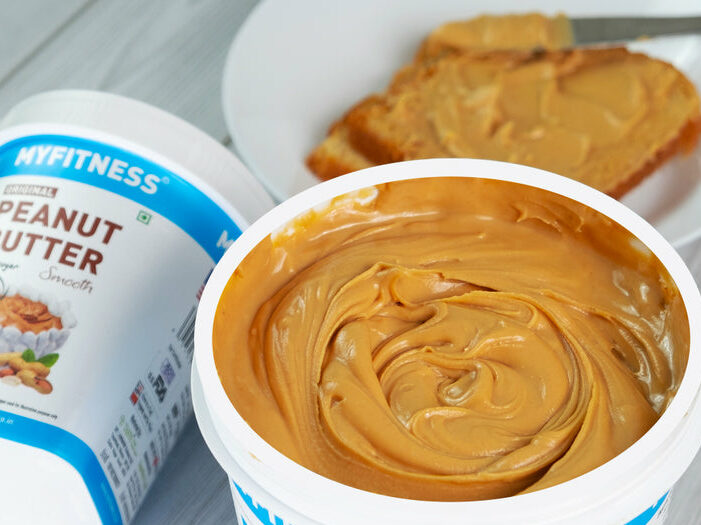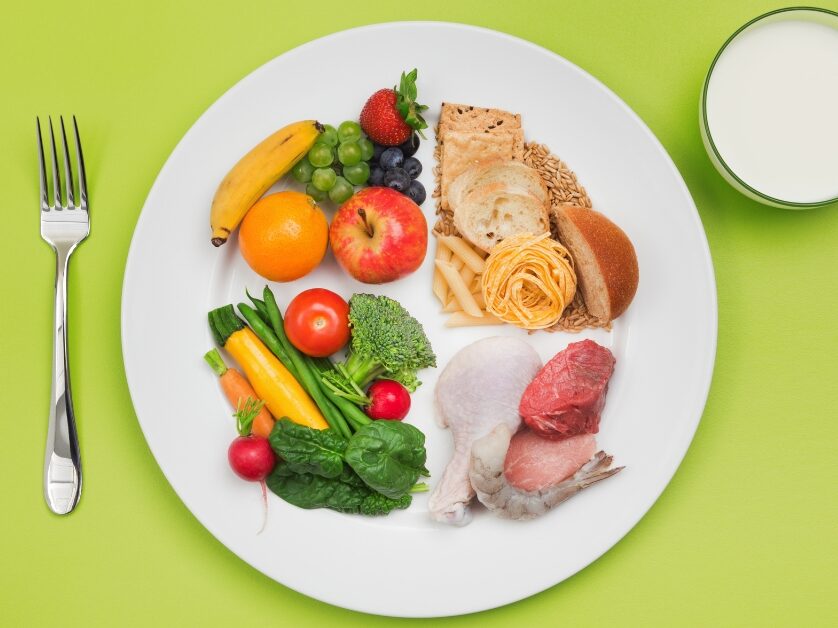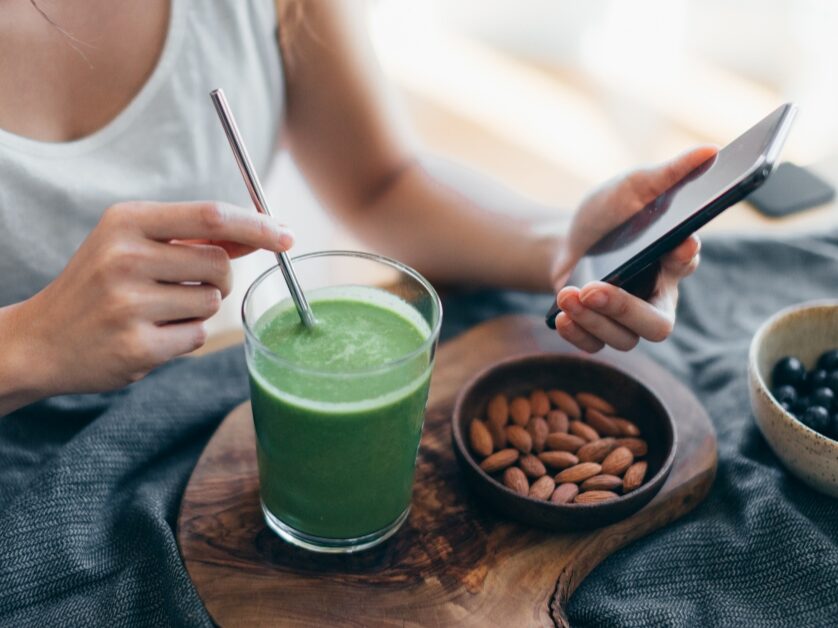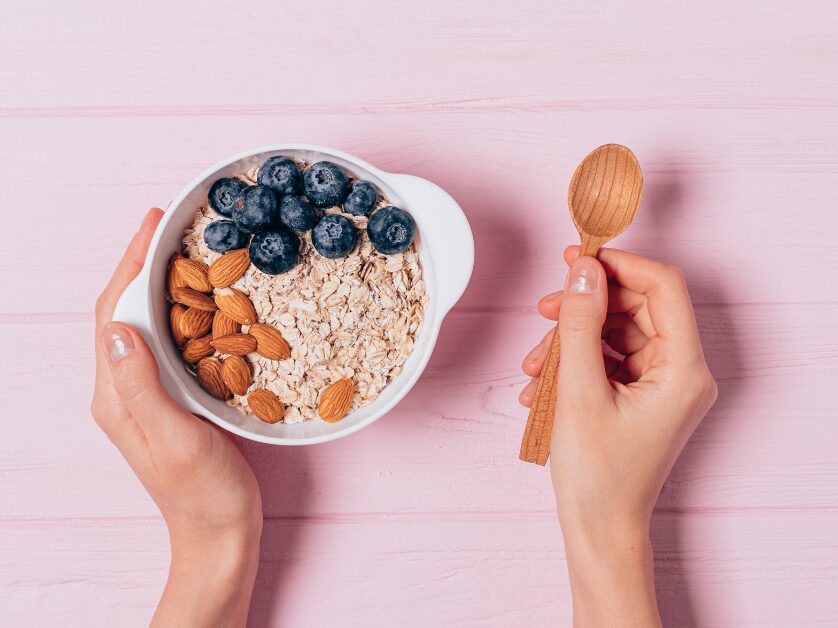If you feel like you’re always hungry or struggling to lose those last few pounds, improper portion sizes could be the culprit.
This is the ultimate guide to mastering healthy portion sizes.
The best part?
You’ll learn easy tricks to eyeball serving sizes so you can finally get the nutrients you need without overeating.
The good news – you don’t need to starve yourself or drive yourself crazy measuring every bite.
If you want to feel satisfied after every meal, improve your health, and achieve your body goals, then this guide is for you.
Ready to master mindful eating? Let’s first understand the related ideology on portion size myths so you can create balanced meals.
Understanding the Importance of Portion Sizes

The food we eat provides our body with the nutrients and energy it needs to function optimally. However, eating too much or too little can negatively impact our health. This is where portion control comes in.
Paying attention to proper portion sizes helps ensure we get adequate nutrients without consuming excess calories. It’s a key step towards maintaining a balanced diet, a healthy weight, and good overall wellbeing.
Learning about appropriate portion sizes and how to measure them is essential for anyone looking to eat healthier.
The Impact of Portion Sizes on Health and Wellness

In recent decades, portion sizes have steadily increased, especially in restaurants and packaged foods. Larger portions mean it’s easy to accidentally take in more calories than we need over a day.
This puts us at higher risk for weight gain and associated issues like heart disease and diabetes.
Studies show people unintentionally consume more calories when served larger entrées or provided bigger packaging. Paying attention to reducing portions has been shown to help with losing weight and belly fat.
In addition, appropriate portion sizes allow enough room in our diet for nutritious whole foods like fruits and vegetables. Proper portions are key to a balanced diet and maintaining long-term wellness.
What is a Serving Size?
To understand portion sizes, it helps to first look at serving sizes. The serving size listed on a food label tells you the amount of food used to calculate all the nutrient information. For example, the serving size might be 1 cup or 2 cookies.
Pay attention to the serving size and number of servings per container. This helps put the portion sizes of packaged foods into perspective.
When looking at portions of whole foods like fruits or cooked grains, guidance is given in common household measures like cups, ounces, slices, or pieces. Becoming familiar with standard serving sizes makes it easier to estimate portions.
Common Misconceptions About Portion Sizes

Many people have misconceptions about what a standard portion size looks like. We are used to seeing oversized portions, which skews our perception.
You may be surprised to see what counts as a serving of some common foods:
- Grains like rice or pasta: 1/2 to 1 cup cooked
- Meat, fish, and tofu: 3–4 ounces
- Cheese: 1.5 ounces or 2 tablespoons grated
- Nut butter: 2 Tbsp of a peanut butter
- Baked potato: one medium potato
A useful slogan to remember is “fist or disk, that should suffice,” which means a clenched fist or disk about the size of your palm works as an approximate single portion size for many foods.
Tips and Techniques for Portion Control

1. Measuring Tools and How to Use Them
While visual estimation works for some foods, using measuring tools improves accuracy. Here are some handy devices:
- Measuring cups and spoons: great for grains, dairy, oils, and nut butter. Allow precision in amounts.
- Food scale: Weigh solid foods like meat and dense baked goods. Useful for accuracy.
- App trackers: Mobile apps allow tracking calories of what you eat for a clear picture.
When using tools to measure portions, remember to account for any added fats and condiments you plan on including. For example, measure out the pasta first, then weigh or estimate the sauce portion separately.
2. Visual Comparisons for Estimating Portions
Visual cues can also help with quick portion estimation:
- 3 ounces of meat = a deck of cards
- 1 ounce of cheese = 4 dice stacked
- 1⁄2 cup grains/pasta = light bulb size
- 1 cup berries = baseball size
- 1 baked potato = computer mouse size
- 1 teaspoon butter/oil = tip of thumb
Look up more visual comparisons online to get familiar with various portion sizes. With practice, you will be able to visually guess amounts and servings accurately.
How Portion Control Contributes to a Balanced Diet?

Eating appropriate portions means getting enough of the key nutrients for good health without excess. For example, grains mainly provide carbohydrates for energy. The recommended daily allowance of carbohydrates is about half your plate at main meals.
This allows room for plenty of vegetables and some protein.
Similarly, portion control ensures adequate vitamin-rich produce and quality protein sources like beans or low-fat dairy without overdoing any one food group.
Paying attention to suggested portions helps ensure all key nutrients are sufficiently included for a nutritionally balanced diet.
Balancing Macros with Portion Control

Macronutrients, or macros, are carbs, proteins, and fats—the main calorie-containing nutrients. Balancing your intake of macros helps you maintain or reach a healthy weight and stabilize energy levels.
Portion control comes into play because carb and protein foods have similar serving sizes of around 1 cup or a palm-sized amount.
However, fats and oils are concentrated at just 1-2 tablespoons per serving. Noting proper portions when building meals and snacks guarantees you meet macro needs without limiting other food groups or adding excess calories.
Practical Tips for Mastering Portion Sizes

1. Portion Control Tips for Eating Out
Dining out poses one of the biggest portion control challenges. Restaurant servings often provide multiple portions on one plate. Try these strategies when eating out:
- Split a main dish or take half home for later.
- Start meals with broth-based soup or salad.
- Ask for sauces or dressings on the side.
- Request a to-go box upfront and pack up half before eating.
- Skip appetizers, bread baskets, or soda, which add excess calories.
2. Adjusting Portions for Weight Management
If you are trying to reach a healthier weight, be mindful that you may need smaller or larger portions depending on your size, activity level, and weight loss goals. Here are some tips:
- Use a TDEE calculator to find your calorie target range.
- Measure portions for the first week or two to understand the appropriate amounts.
- Adjust portions up or down as needed to meet your calorie deficit goals.
- Include more low-calorie, nutrient-dense foods like fruits and vegetables.
3. Mindful Eating Strategies for Better Portion Control
Rushing through meals often means overeating. Applying mindful eating techniques helps support portion control.
- Serve meals on plates rather than eating directly from packages.
- Sit down and avoid distractions during meals.
- Chew thoroughly and pause between bites.
- Stop when you feel satisfied, rather than overly full.
- Use smaller plates, bowls, and serving utensils.
Overcoming Challenges in Portion Control

1. Dealing with Hunger and Fullness Cues
Learning to listen to your internal hunger and fullness signals aids portion control. It takes some practice, but it pays off. Tips for managing hunger include:
- Identify true hunger vs. cravings.
- Allow yourself to feel hungry between meals.
- Stay hydrated with water.
- Choose filling, nutrient-dense foods.
- Eat every 4–6 hours if needed.
Likewise, listen when you start feeling full to guide appropriate portions. It can take the stomach around 20 minutes to signal the brain that you’re full. Consider it a normal sign to wrap up eating when satisfied rather than uncomfortable. Portion control becomes easier with improved body awareness.
2. Strategies for Resisting Oversized Portions
Despite awareness of portions, it’s tempting to overeat when piles of food sit in front of you. Here are some go-to strategies:
- Use smaller plates and bowls at home to control visual cues.
- Share or split restaurant meals with a friend.
- Ask for a takeaway container with the check to box up anything uneaten.
- Distract yourself or brush your teeth if late-night cravings hit after finishing an appropriate dinner.
- Bulk up meals with lower-calorie foods like veggies to feel more satisfied.
Portion Control in Special Diets

1. Tailoring Portions for Vegetarian, Vegan, or Special Diets
Portion guidance allows flexibility, whether following an omnivore, vegetarian, or vegan diet. Vegans do need to pay special attention to ensuring adequate protein at meals and may need slightly larger portions of plant proteins like beans, tofu, and edamame.
Those limiting dairy products need enough alternate calcium sources like greens or fortified milk alternatives.
Anyone with specialized diet needs like diabetes or celiac disease should work with a registered dietitian to develop a personalized meal plan with appropriate portions to meet unique nutrition goals.
2. Portion Control in Diet Plans (Keto, Paleo, etc.)
Trendy diets like keto and paleo promise quick results if you follow specific food restrictions. However, portion control remains an essential element.
Keto portions emphasize high fat, moderate protein, and minimal carbs, while paleo focuses more on lean protein and produce. Either way, overdoing any one component means missing out on a balanced diet in the long run.
While temporarily limiting certain food groups, use recommended portions as a template. Fill at least half your plate with non-starchy vegetables, add moderate protein portions based on your needs, and keep high-fat or high-carb treats to just a few bites.
This allows for targeted results without forgoing overall nutrition.
How Does Consistent Portion Control Affect Health?

Research confirms that mastering proper portion sizes provides both immediate and lasting positive effects on health.
Short-term perks
- Improved energy levels
- Reduced belly fat
- Better sleep
- Balanced nutrition
Long-term payoffs
- Sustained weight management
- Reduced disease risk factors
- Healthier aging
- Disease prevention
The key is consistency. Sticking with smart portions most of the time empowers you to indulge from time to time while still supporting overall well-being.
Embracing Portion Control for Lifelong Health

No matter your age, goals, or dietary preferences, keeping portion sizes in check is essential for balanced nutrition, sustainable weight management, and disease prevention.
Luckily, with education around standard servings, the use of visual cues and measuring tools, and practising mindful eating, portion control is a simple habit to implement. Master proper portions, and you will master your health for the better.
Key Takeaways
- Portion distortion has led to overeating and negative health impacts.
- Use nutrition labels, measuring tools, visual comparisons, and your senses to identify and stick to the proper portions.
- Consistent portion control contributes to balanced diets, healthy weights, and long-term well-being.
- Employ strategies like mindful eating, meal planning, and smart food choices to overcome challenges.
- Allow modest adjustments to portions for specialized nutrition plans or weight loss goals.
Next step: Review your typical meals and start identifying areas to implement better portion control through measurement, food swaps, or visual cues. Work on just 1-2 changes per week until portion mindfulness becomes a habit!
Frequently Asked Questions
What is portion size control?
Portion control means choosing a healthy amount of a certain food. Portion control helps you get the benefits of the nutrients in the food without overeating.
Why is it important to control portion sizes?
Research has shown that people almost always eat more food when offered larger portions. So portion control is important when you’re trying to lose weight and keep it off.
What is the formula for portion size?
To determine serving size, you can weigh the food and divide it by the number of servings. Many recipes also provide the recommended serving size.

